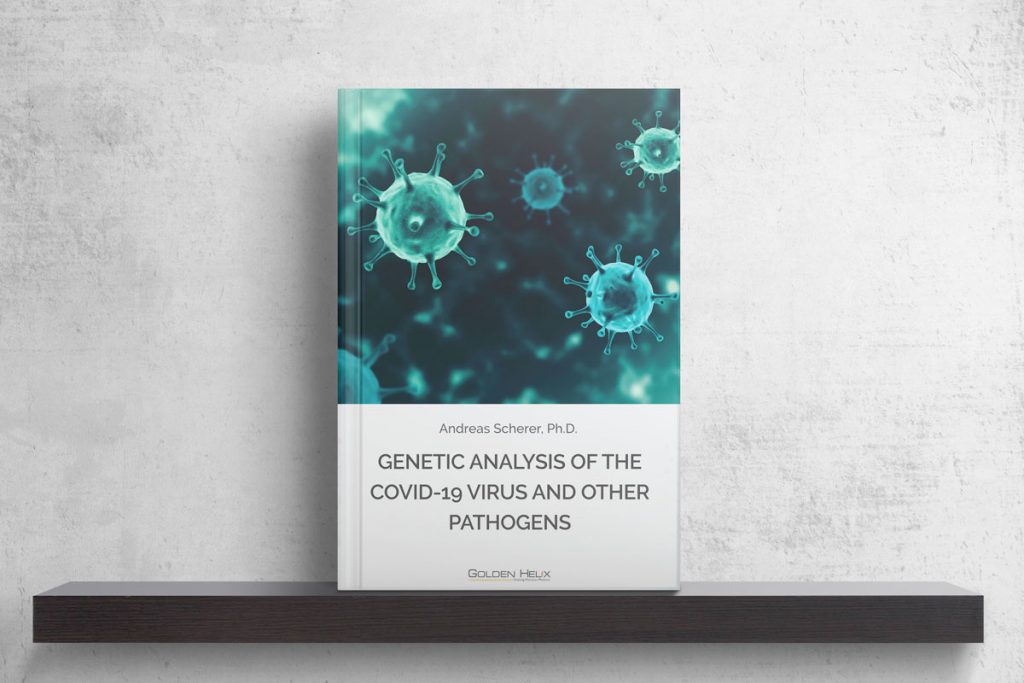
*The following text is only a preview of our new eBook “Genetic Analysis of the COVID-19 Virus and Other Pathogens”. Request a free copy to access the full version.*
SARS-CoV-2 has just been recently discovered. The knowledge about this virus is fairly new and certain aspects of it are still under review or in-flux entirely as we learn more about this virus on a daily basis. Most of the papers that I cite for this eBook have been published in 2020. In this chapter, I summarize the state of our understanding of this virus based on an article written by Di Wu et al. (2020).
Epidemiology
The virus has rapidly spread from Wuhan to China’s other areas and reached global proportions as it is now present on all continents except Antarctica. As of March 26, 2020, there over 510,000 confirmed cases and approximately 23,000 deaths globally. According to the European Centre for Disease Prevention and Control (ECDC), the latest daily risk assessment is moderate to high level. The case fatality rate of the currently reported cases in China is less than 4% which implies that so far this novel coronavirus does not seem to cause the high fatality rates previously observed for SARS-CoV and MERS-CoV. However, it has a higher R0 (2.2 -3.7) value than either of these viruses. SARS-CoV has an R0 of 0.67 – 1.23. MERS-CoV has an R0 of 0.29-0.8 (see Trilla, 2020).
Reservoir Hosts
Bats and other species can function as so-called reservoir hosts. They have played a critical role in transmitting various viruses, including Ebola. Cui et al. (2019) describe the origins of SARS-CoV and MERS-CoV likely to be in bats as there is a strong genetic overlap between the viruses extracted from bats and their human-transmissible versions. In fact, recent research showed that SARS-CoV-2 is 96% identical at the whole-genome level to a bat coronavirus. Understanding the origins of a virus and when and how exactly the jump to humans occurred helps to understand and eventually control its spreading.
Route of Transmission
Currently, we can confirm that respiratory droplet transmission is the main route of transmission. There are a number of ways how these can transmit from human to human such as unclean surfaces (e.g. doorknobs), clothes, but also aerial droplets and contact. Asymptomatic infections can lead to a wider spread as the hosts are unaware of their ability to transmit. Recently, the new coronavirus was also found in the feces of confirmed patients in Wuhan, Shenzhen, and even in the US. This means that the virus is able to replicate in the digestive tract and opens up the possibility of fecal-oral transmission. At this moment in time, there is no confirmation that aerosol transmission of COVID-19 is possible, however, this aspect is still being investigated. Also, neonatal infections, mother-to-child transmission, have been observed but need to be confirmed (see Fuk-Woo et al., 2020; Phelan et al., 2020; Jin et al., 2020; Shen et al., 2019; Zhu et al., 2020).
Clinical Manifestation
Let’s look in further detail what we know about the clinical manifestation of this novel pathogen.
Incubation Period and Symptoms
A number of publications based on smaller enrollment numbers suggest an incubation period from 1 to up to 12 days with a mean of 5-7.5 days. In a larger study with 1,099 patients extracting data from laboratory-confirmed cases from 552 hospitals in 30 Chinese provinces, researchers reported that the estimated mean incubation period of a SARS-CoV-2 infection was 4.0 days (Guan et al., 2020).
The same study (Guan et al., 2020) reported the following data. The median age of the patients was 47 years. 41.9% of the patients were female. 5% were admitted to the ICU. 2.3% underwent invasive mechanical ventilation and 1.4% died. Only 1.9% of the patients had a history of direct contact with wildlife. The most commons symptoms were the following:
- Fever: 43% on admission, 88.7% during hospitalization
- Cough: 67.8%
- Diarrhea: 3.8%
Coincidentally, the SARS-CoV-2 infected cases have symptoms like fever, fatigue, dry cough, dyspnea, etc., with or without nasal congestion, runny nose, or other upper respiratory symptoms. There are reports of loss of smell and taste in otherwise non-symptomatic cases.
Diagnosis
From a diagnostic standpoint here the available options:
Physical Examination
Some patients may not present any clinical noteworthy symptoms, despite being infected with the virus, except perhaps the loss of smell or taste. Patients in severe condition may have shortness of breath, moist rales in lungs, weakened breath sounds, dullness in percussion, and increased or decreased speech tremor…
If you enjoyed this preview of our new eBook and wish to continue reading, download a complimentary copy on our site: